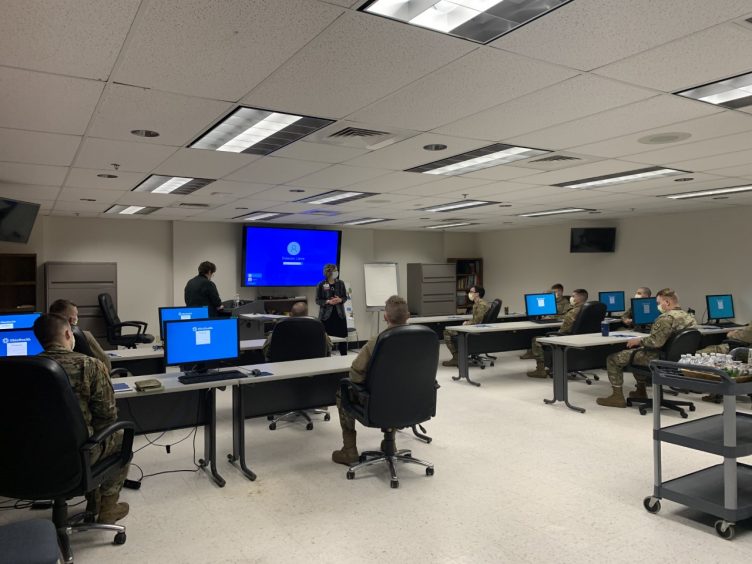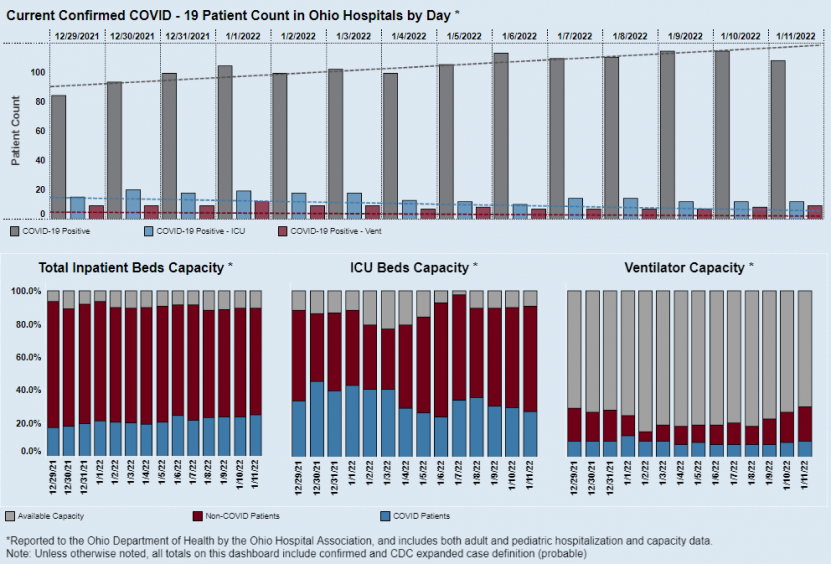News
“Tired” local health care systems weather the latest surge of COVID-19
By: Kaitlin Thorne
Posted on:
ATHENS, Ohio (WOUB) – Hospitals in Southeast Ohio are feeling the strain of the latest wave of COVID-19, as many facilities near capacity and wait times for hospital transfers increase.
In an attempt to alleviate the pressure, around 1,050 members of the Ohio National Guard were first deployed to hospitals last month. OhioHealth O’Bleness Hospital in Athens announced the local assignment of ten Guard members to the hospital in a press release on Friday.
Rhonda Dixon, chief nursing officer for O’Bleness, hopes that the Guard’s deployment will bring some relief to the pandemic exhausted staff.

Guard members will be serving as patient companions, providing assistance for patients with mobility limitations, stocking supplies and answering phones.
“It’s not a panic by any means. It’s a supplement to help us keep the train on the track here,” Dixon said.
Locally, leadership from the Athens City-County Health Department, Ohio University and O’Bleness meet once a week to keep track of patient numbers and discuss the needs of the hospital. One of the items discussed is hospital transfers, as patients needing a transfer have been experiencing longer wait times. Health Department Health Commissioner and Medical Director Dr. James Gaskell said the reason for this may be due to lack of nursing staff.
“They may have beds but they may not have enough people to take care of them. That’s been a problem,” Gaskell said, before reassuring that patients have yet to be turned away for care. “The people in the county should feel comfortable if they need to go to the hospital. They can be hospitalized here.”
Alongside the National Guard, Gaskell said that O’Bleness is also utilizing travel nurses to supplement its nursing staff.
Dixon assures that despite the longer wait times, transfers to larger hospitals in Columbus still remain possible.
“We have patients that do wait extensive periods of time before being transferred. Columbus has not said ‘No, we’re not going to accept any transfers,’ it just may take longer than normal and based on patient condition is how they are prioritized,” Dixon said.
Nearing capacity
Health care systems around the state are experiencing a higher rate of COVID patients with the increase of the omicron variant. According to Gaskell there are currently 716 COVID positive patients being treated by OhioHealth.
“Across the entire OhioHealth system they have more people in the hospital than they’ve ever had,” Gaskell said.
Holzer Health System is also seeing the effects of the omicron variant at its facilities. Karrie Swain Davison, the public information officer for Holzer, stated that it has seen an increase in admissions due to both COVID and other illnesses within the community.
“At times, our Gallipolis and Jackson facilities are at capacity for patients requiring hospital stays. We continue to manage the healthcare needs of our communities with the staff we have available. Each admission is reviewed and managed on a case by case basis. We have worked with facilities within the state to ensure that our communities are receiving the care that they need when it is needed,” Swain Davison said.
In a prepared statement, Holzer explained that its nurses are currently using an algorithm to calculate how many patients can be properly cared for based on the available staff. Additionally, the health system has utilized its Holzer Home Care program to provide health care for COVID patients that do not require hospitalization.

As of Monday afternoon, O’Bleness has a capacity of 45 in-patient beds, nine of which are currently occupied by COVID patients. Additionally, O’Bleness has eight ICU beds, two of which are occupied by COVID patients and three are occupied by non-COVID patients. Gaskell stated that hospital occupancy fluctuates everyday but as of Monday afternoon there were around 15 beds available.
The New York Times hospitalization database reports on ICU occupancy for hospitals around the country. The state average for Ohio ICU occupancy is currently 86% and nationally 80%. Occupancy within local hospitals as of publication time:
- Adena Regional Medical Center, Chillicothe, OH – 100% occupancy, with 39 COVID patients and zero ICU beds available
- Berger Hospital, Circleville, OH – 91% occupancy, with 14 COVID patients and 0.7 ICU beds available
- Genesis Hospital, Zanesville, OH – 82% occupancy, with 64 COVID patients and four ICU beds available
- Holzer Medical Center, Gallipolis, OH – 100% occupancy, with 20 COVID patients and zero ICU beds available
- Hocking Valley Community Hospital in Logan, OH – 49% occupancy, with five COVID patients and three ICU beds available
- Marietta Memorial Hospital in Marietta, OH – 100% occupancy, with 29 COVID patients and zero ICU beds available
- Southeastern Ohio Regional Medical Center, Cambridge, OH – 93% occupancy, with 17 COVID patients and one bed available
O’Bleness President LeeAnn Helber said that the high number of patients that hospitals are seeing isn’t strictly COVID related.
“We’re busy. It’s not just COVID patients. People still get sick and we have our fair share of folks that are sick and non-COVID related. We’re still very busy,” Helber said.
Despite the high number of COVID cases the area has been experiencing, Helber said that the hospital is far behind where it was during October’s Delta variant surge with COVID patients. She suspects that the number of COVID related hospitalizations may increase with the recent return of Ohio University students to campus.
“That might change things a little bit for us. But overall we’re not quite at our surge peak where we were in October,” Helber said.
Dixon, Helber and Gaskell all agree that the biggest thing that can be done to help health care systems not be overwhelmed is to get vaccinated, as the omicron variant is highly contagious and the quick spread may land the unvaccinated in the hospital.
“We have COVID and non COVID patients and what we are seeing with our COVID patients are sick, unvaccinated people. If I could say one thing, it’s please, it’s not too late. Get a vaccine,” Dixon said.

